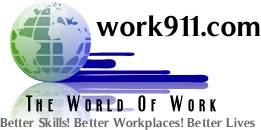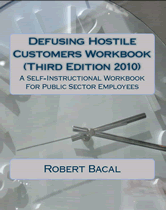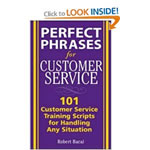
Recognizing the accomplishments of both employees that report to you, OR the success of peers and colleagues can increase your contribution to the motivation and morale levels in your organization. Surprisingly, for many people, congratulations or simple recognition of achievement is more powerful than receiving a monetary reward. Here's twelve ideas on how to show you notice and value successful performance in your organization.
Twelve Tips For Recognizing The Contributions of Your Employees And Colleagues
In any organization, it is important that employees feel that their contributions are both valued and recognized. In traditional top-down organizations, it is usually management that designs and implements recognition strategies for employees. However, as organizations are moving to quality improvement initiatives that are based on different organizational principles, process of developing recognition system must change.
Over the next few pages, you will find some tips and principles related to developing and using recognition systems within a Total Quality Management framework.
1) Any recognition strategy must be designed and implemented with the notion that the employees are the "customers" of the program. It is these "consumers" that must specify the requirements of the system.
2) A recognition system must fit into the organizational culture and climate. Sometimes it is better to delay a formal recognition system until prerequisites are in place. Within a climate where distrust of management is high, it will be very difficult to introduce recognition systems.
3) Generally, a recognition system should be consistent with the notion that today's workplace requires a high level of teamwork and coordination with other employees. In a sense any individual achievement or contribution has been helped along directly or indirectly by coworkers. "Stars" need recognition, but so do solid team members.
4) Informal recognition (e.g.. the informal pat on the back) can happen anytime. However, a formal system should be based on some form of measurement of results. Recognizing a good idea in an informal way is one thing. A decision to give an "award" should be based on data that illustrates that the idea brought measurable results. TQM in general involves moving away from gut-feeling decisions to data driven processes. Your recognition process should do they same. Philip Crosby, TQM guru states:
"Recognition that lasts...comes as a result of work that is performed to agreed-upon measurements. That is why it is absolutely necessary that the measurement process be set up and established prior to recognition." (Quality without Tears, p.165)
5) Use a quality improvement team to determine recognition needs. Make sure that the team understands what a recognition program is to accomplish, however, and then let them figure out how to get the information they need.
6) Communicate the intent and purpose and process used for your recognition system, and make the entire process as open and employee-based as possible. When employees understand that there is a rhyme and reason to the process, they are less likely to resent recognition of others.
7) While we shouldn't underestimate the role that management recognition can play, Crosby suggests that "The most valuable recognition comes as a result of peer judgment".
8) The higher the monetary or utilitarian value of any "award" the more likely that a competitive environment will be created, along with subsequent conflict and bad feelings. To counteract this, keep the value of actual rewards low, and look to team based rewards.
9) Think of recognition as a system...a process that uses many ways of sending the same message -- "We (I) see the good work you do...we value it...we appreciate it." Plan your recognition systems to include formal and informal things...occasional formal rewards, and whole lots of informal interpersonal stuff...pats on the back. Don't make the mistake of relying only on a once a year award of a plaque (or something).
10) The manager (or supervisor) sets the tone for informal recognition. By publicly recognizing achievement or effort, he or she starts to get the message across that "we celebrate our effort and our accomplishments".
11) Avoid situations where people are recognized for doing something as opposed to accomplishing something. Within TQM you want to encourage an emphasis on results rather than work done. As Crosby suggests: "If you focus on work you get more of it. If you focus on results you get more of that."
12) Make recognition a standard and integrated part of any staff meetings. Consider asking the question: "What wonderful things have we accomplished since our last meeting?" Encourage people to talk about their own accomplishments, and to talk about those of their coworkers.





